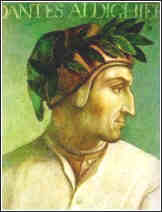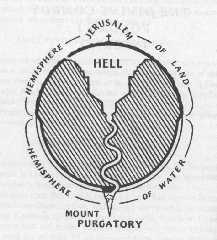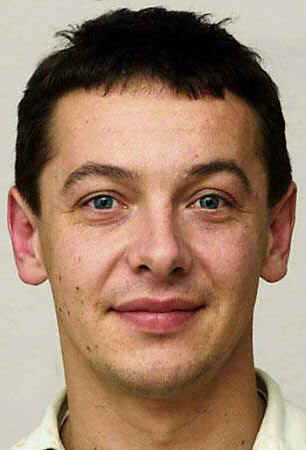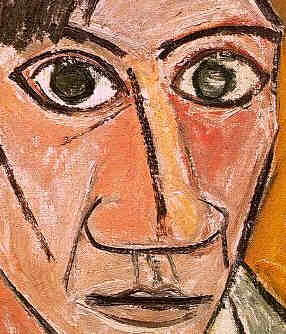1919 Lóránd
Eötvös, Hungarian physicist and mathematician born
on 27 July 1848. He invented the Eötvös balance and showed that,
to a high degree of accuracy, gravitational mass and inertial mass are equivalent.
1916 Eric Scroeder, and a policeman, by Bob Burman's car
(with Scroeder riding as mechanic) crashing through a barrier into the crowd
at the last Boulevard Race in Corona, California. 5 spectators are badly
injured. The boulevard race started in 1913 on a 3-mile street circuit.
This ended racing in inland Southern California for almost 40 years.
1899
Martha Place, first woman in the electric chair.
^top^
The electric chair, ostensibly designed to be less barbarous than
hanging, was first used in the execution of William Kemmler in 1890.
The use of electricity as a means of capital punishment had arisen
in the 1880s after the governor of New York claimed that hanging was
a method from the dark ages and that electricity was the modern, scientific
way to kill people. People were beginning to feel squeamish about
the public spectacle of hangings at that time. The electric chair
also had the advantage of taking up less space than the gallows. As
electricity was being developed and touted by early supporters for
commercial uses in the United States, its energy-source competitors
attempted to raise questions about its safety. They hoped that its
association with executions would scare the public away from using
electricity. It didn't quite work out that way.
The controversy surrounding the method of execution would arise once
more by the end of the century, when most US states would have discontinued
the use of the electric chair in favor of lethal injection. Hoping
it would scare the public away from injecting themselves with illegal
drugs? |
1816 Saint
Julie Billiart, foundress and first superior-general of the
Congregation of the Sisters
of Notre Dame of Namur.
1794
(19 germinal an II) Condamnés à mort par la Révolution:
^top^
Par
le tribunal révolutionnaire de Paris:
AGRON Jeanne veuve Henique de Chevilly dite Marsily,
domiciliée, à Paris; comme contre-révolutionnaire, le 19 germinal,
an 2.
BORRY Angélique, femme de Pierre Antoine
Bonfant, âgée de 50 ans, née à Douay, département du Nord, femme de
chambre de la femme Hervilly, ex noble, domicilié à Daignecourt, département
de la Somme, comme convaincue d'avoir entretenu des intelligences
avec les ennemis de la République.
BROVHET Antoine
(dit Saint Prest), âgé de 25 ans, né à Paris, ex noble et garde du
dernier tyran roi, domicilié à Gray, canton de la Ferté-Bernard, département
de la Sarthe, comme conspiration, pour avoir conspiré dans la journée
du 10 août 1792.
LARDIN Pierre Saturnin,
vigneron, âgé de 31 ans, né à Nogent-sur-Marne, domicilié à Montreuil,
département de la Seine, comme contre-révolutionnaire.
DAUQUECHIN
Louise Marie, femme Lardin, ex noble, âgée de 27 ans, née
à Montreuil, département de la Seine, le 19 germinale an 2, comme
conspiratrice.
DAUQUECHIN Jean Pierre (dit
Dorval), ex noble, officier municipal, âgé de 40 ans, domicilié à
Montreuil, département de la Seine, comme contre-révolutionnaire.
DOIRY Angélique, femme Bonfaut, femme de chambre,
domiciliée à Daignecourt, département de la Somme, comme conspiratrice.
GAURON Joseph Louis, ex curé, domicilié à
Nigron, département de l'Indre et Loire, par le tribunal révolutionnaire
séant à Paris, comme contre-révolutionnaire.
GEMPTEL
Guillaume, cuisinier, âgé de 26 ans, né à Bresse, domicilié
à Paris, département de la Seine, comme marchand d'argent; ce qui
établissait entre l'assignat et le numéraire une différence tendante
à discréditer les assignats.
GRINDON Joseph Louis,
âgé de 27 ans, né à Limeray, département d'Indre et Loire, ex curé
constitutionnel de la commune de Négron, même département, comme convaincu
d'avoir en 1792 et 1793 tenu des propos tendant à provoquer la dissolution
de la représentation nationale, et des autorités constituées.
LARDIN Pierre Saturnin, vigneron, âgé de 31 ans,
né à Nogent-sur-Marne, domicilié à Montreuil, département de la Seine,
comme contre-révolutionnaire.
Commes
brigands de la Vendée, par la commission militaire de Nantes:
LESAGE Antoine, domicilié à Nantes, département
de la Loire Inférieure.
...
domiciliés à Bouguenais, département de la Loire
Inférieure:
CHARPENTIER Michel
— FIGUREAU André
CHATAIGNIER Isabeau,
comme complice des brigands de la Vendée.
Ailleurs:
BOUGIS Hervé, marchand chiffetier,
domicilié à St-James, canton d'Avranches, département de la Manche,
comme contre-révolutionnaire, par la commission militaire séante à
Grandville.
OLIVIER Anne, femme de Herné Mougisa,
domiciliée à St James, département de la Manches, par la commission
militaire de Grandville, même département, comme contre-révolutionnaire.
BROUMET Rose, marchand, domiciliée à Revel,
département de Haute Garonne, comme voleuse avec récidive, par le
tribunal criminel dudit département
DUBAYLE Laurent,
ex vicaire, domicilié à Castelnau, département des Landes, comme réfractaire
à la loi, par le tribunal criminel dudit département.
GOUGELET
Jean, ex curé, domicilié à Chougy, département de la Marne,
par le tribunal criminel dudit département, comme réfractaire.
GUIZOT-GUIHOUX André François, homme de loi, domicilié
à Nismes, département du Gard, par le tribunal criminel dudit département,
comme conspirateur.
MOULLÈ Nicolas, âgé de
24 ans, né à Manois (Haute Marne), hussard au 6° régiment, à Arras
le 19 germinal an II
PELON Jean Jacques, domicilié
à Navial département de l’Aveyron, par la commission militaire d’Auxonne,
comme émigré.
VIGNERON Amable Firmin, ex carme,
domicilié à Amiens, département de la Somme, comme réfractaire à la
loi, par le tribunal criminel dudit département. |
1793 FERY François, cocher, domicilié à Bruz, département
d’Ille-et-Vilaine, condamné à mort par le tribunal criminel
dudit département comme contre-révolutionnaire.
1703 Domenico
Piola, Italian painter born in 1627. — more
with links to images.
1654 Lorenzo Garbieri “il Nepote”,
Italian artist born in 1580. — more
1461 Georg
Peurbach, Austrian astronomer and mathematician born on 30
May 1423.
1143 John II Byzantine emperor, in an
accident
0490 Saint
Perpetuus (one of 3 possible dates for his death) 8th bishop
of Tours
0217 Caracalla [Marcus Aureiius Antoniius],
Roman emperor.
|
 On
an April 08:
On
an April 08: 

 Deaths
Deaths
 2002
Israelis Staff Sergeant Matanya Robinson, 22, and Sergeant Shmuel Weiss,
19, in attack on the Palestinian Jenin refugee camp. [< Robinson
||| Weiss >]
2002
Israelis Staff Sergeant Matanya Robinson, 22, and Sergeant Shmuel Weiss,
19, in attack on the Palestinian Jenin refugee camp. [< Robinson
||| Weiss >] 1999
1999